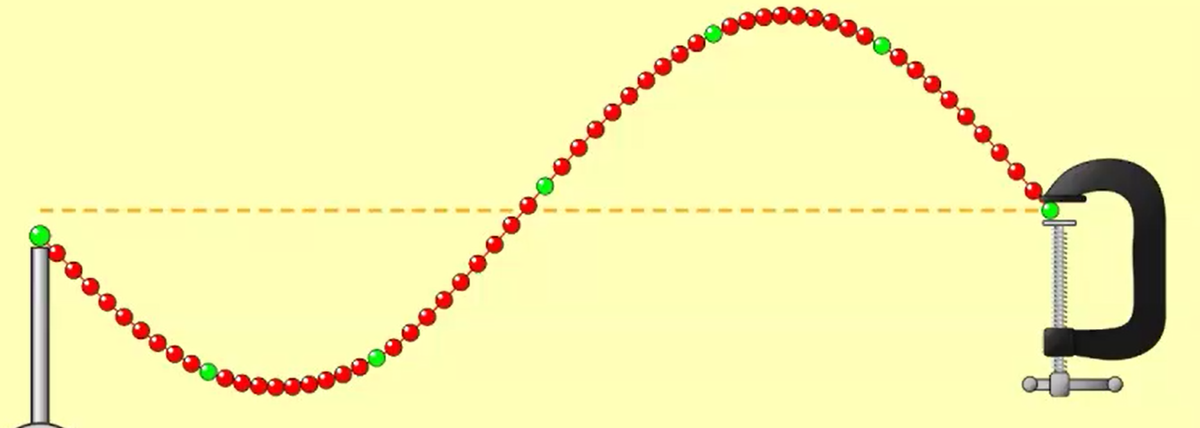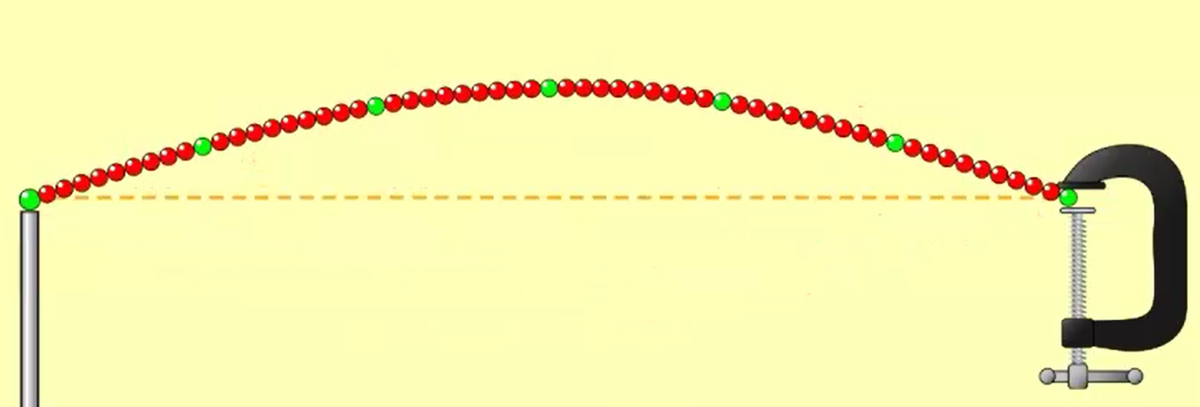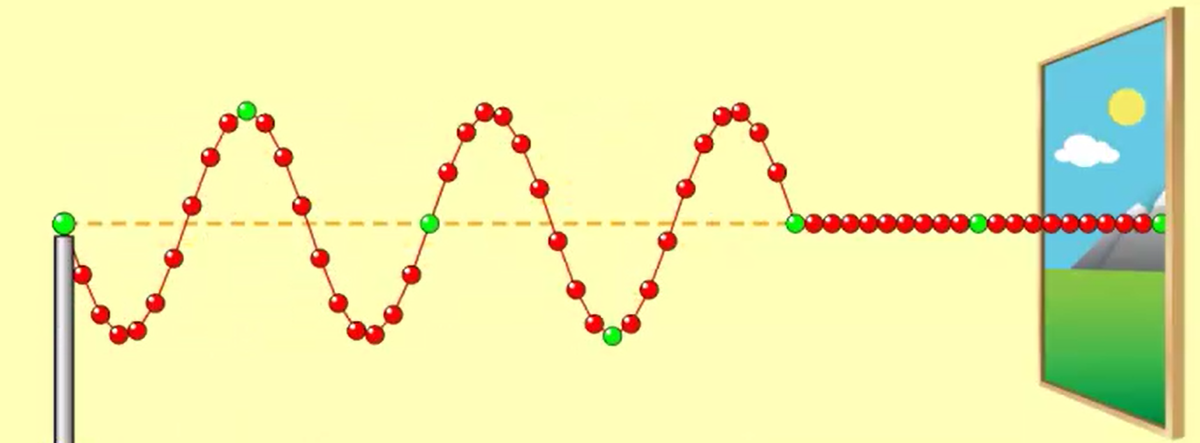Myths about teaching can hold you back
- Year 10
- AQA
- Foundation
Measuring waves on a string
I can find the speed of waves on a string by measuring ‘standing wave’ patterns.
- Year 10
- AQA
- Foundation
Measuring waves on a string
I can find the speed of waves on a string by measuring ‘standing wave’ patterns.
These resources will be removed by end of Summer Term 2025.
Switch to our new teaching resources now - designed by teachers and leading subject experts, and tested in classrooms.
These resources were created for remote use during the pandemic and are not designed for classroom teaching.
Lesson details
Key learning points
- To find standing wave frequencies, increase the frequency of the oscillator until a standing wave pattern is seen.
- The wavelength of the waves can be found from the length of the oscillating string and the standing wave pattern
- The speed of waves on a string only depends on the properties of the wave medium (the string).
- For waves on a string, frequency and wavelength are inversely proportional
- Control variables are the quantities that must be kept the same during experiments so they don’t affect results.
Keywords
Standing wave - A standing wave is a stable pattern of oscillation that does not appear to travel across a wave medium.
Tension - Tension is the name for the force applied to a stretched string or rope. Without any tension a string or rope would be slack.
Inverse - Division is the mathematical inverse (opposite) of multiplication, so the inverse of ×2 is ÷2 (which can also be written as ×½).
Proportion - A proportion is an exact mathematical comparison, such as double, half (50%), triple, a third, quadruple, a quarter etc.
Control variable - Control variables are the quantities that must be kept the same during experiments so they don’t affect results.
Common misconception
Frequency or wavelength of waves on a string will affect the wave speed.
The speed of waves on a string only depends on the properties of the wave medium (the string) e.g. tension, density
To help you plan your year 10 physics lesson on: Measuring waves on a string, download all teaching resources for free and adapt to suit your pupils' needs...
To help you plan your year 10 physics lesson on: Measuring waves on a string, download all teaching resources for free and adapt to suit your pupils' needs.
The starter quiz will activate and check your pupils' prior knowledge, with versions available both with and without answers in PDF format.
We use learning cycles to break down learning into key concepts or ideas linked to the learning outcome. Each learning cycle features explanations with checks for understanding and practice tasks with feedback. All of this is found in our slide decks, ready for you to download and edit. The practice tasks are also available as printable worksheets and some lessons have additional materials with extra material you might need for teaching the lesson.
The assessment exit quiz will test your pupils' understanding of the key learning points.
Our video is a tool for planning, showing how other teachers might teach the lesson, offering helpful tips, modelled explanations and inspiration for your own delivery in the classroom. Plus, you can set it as homework or revision for pupils and keep their learning on track by sharing an online pupil version of this lesson.
Explore more key stage 4 physics lessons from the Measuring waves unit, dive into the full secondary physics curriculum, or learn more about lesson planning.

Content guidance
- Risk assessment required - equipment
Supervision
Adult supervision required
Licence
Prior knowledge starter quiz
6 Questions
Q1.Waves on a string are waves.
Q2.What is 12 cm in metres?
Q3.Some waves on a string have a frequency of 3 Hz and a wavelength of 12 cm. How would you calculate the wave speed in m/s?
Q4.In experiments, what are the different types of variables?
what you change in each test to see what effect it has
what you monitor to see if it changes in response
what you keep the same so they don't affect the results
Q5.When a wave travels along a string, what is the wave medium?
Q6.If waves of different frequencies and wavelengths all have the same speed, what happens if you increase the frequency of waves?
Assessment exit quiz
6 Questions
Q1.In an experiment, a variable that must be kept the same so it does not affect the results, is called a variable.
Q2.Which images show a standing wave on a string?




Q3.The length of string oscillating in this image is 90 cm. What is the wavelength of the waves?



